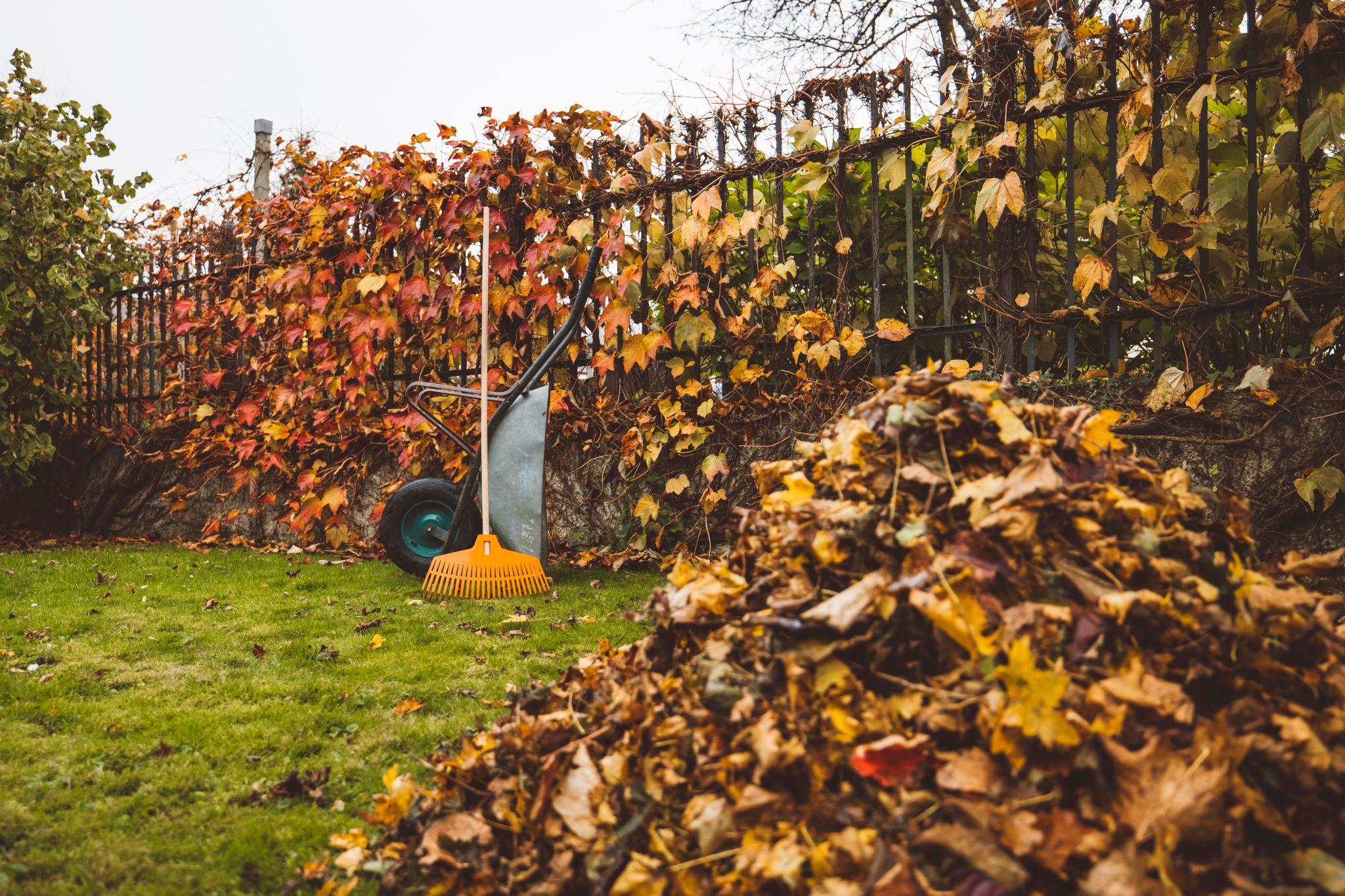Now that you’ve gathered your leaves — yay, you! — here’s how to get rid of them.
Heads up: Most municipalities have ordinances controlling how to dispose of leaves, including leaf blowing, bagging, burning, and vacuuming. So, check your town’s website before beginning this common chore.
Here are six leaf removal tips:
Blow Leaves into the Woods
If you own woods or fields behind your home, blow leaves into those natural areas where they’ll decompose and continue the circle of life. That way, you won’t have to bag leaves or wait for the city’s leaf vacuum to suck them up and cart them away.
Make sure you blow leaves deep into natural areas, or a stiff wind may blow them back onto your property, and you’ll have to remove leaves again.
Bag ‘em
Check local regulations to see what kind of bags are allowed: Some towns only pick up leaves in clear plastic bags; others require recyclable paper bags. Be sure you know which days your town picks up bagged leaves.
You’ll need a lot of bags, but the leaves will be protected from wind and rain while awaiting pickup.
Vacuum Them Away
Many towns send leaf vacuum trucks to suck up leaves. Your job is to pile leaves at the curb as close to pickup dates as possible.
Make sure you don't:
- Cover storm drains.
- Block fire hydrants.
- Park cars near leaves. Not only will that make it harder for vacuum trucks to gather leaves, but your car will be covered in leaf dust after collection. Also, never park on top of leaves. It’s a fire hazard.
Let Leaves Degrade
Your compost pile loves dead leaves, brown matter that provides carbon to help cook nitrogen-rich grass clippings and table scraps. Leaves decompose faster if you shred them before adding to your compost pile.
If you don’t want to shred leaves, keep them whole and let them decompose into “leaf mold,” a great garden mulch and soil amendment that increases water retention and promotes garden worms and beneficial bacteria growth.
In fall, create leaf mold by piling leaves in a corner of your garden, or spreading them over your garden and around tress and shrubs (but don’t touch trunks). In spring, turn the partly decomposed leaf mold into the soil.
The best choices for leaf compost are lower in lignin and higher in calcium and nitrogen, including ash, maple, fruit tree, poplar, and willow leaves, according to Epic Gardening. The reverse kind of leaves — higher in lignin and lower in nitrogen and calcium — aren't well suited to composting, and include beech, oak, holly, and sweet chestnut.
Return Leaves to the Earth
Instead of raking or blowing leaves, use a mulching lawn mower to reduce them to shreds, which will quickly decompose and nourish your lawn next spring.
“It’s much faster then bagging and hauling leaves,” says Nina Orville, executive director of Sustainable Westchester Inc.
Your goal is to chop the leaves a little bigger than long-grain rice. At first, your lawn will have a slightly brown patina. But the leaf bits will sink through the grass into the ground in a few days, returning your fall lawn to green.
Burn the Pile
Yes, leaf burning is a fire hazard and air pollutant. The Environmental Protection Agency recommends against burning, and some states have banned burning.
There's also the risk of wildland fires. Humans cause almost 85% of wildland fires in the U.S. through unattended campfires, the burning of debris including leaves, equipment use and malfunctions, negligently discarded cigarettes, and intentional acts of arson, according to the National Park Service, based on Wildland Fire Management Information and the U.S. Forest Service Research Data Archive.
In addition, leaf burning produces hydrocarbons containing toxic and carcinogenic compounds that can irritate the eyes, nose, throat and lungs, according to "Family Safety and Health" magazine. And it generates carbon monoxide
If your community and state don't ban leaf burning and, you want to dispose of leaves by burning despite the risks, be sure to follow local guidance and the following tips:
- Make sure your town permits burning and find out what days and hours burning is allowed.
- Burn leaves in small piles (three feet in diameter) in a cleared area (10 feet in diameter).
- Have a fire extinguisher, water, or sand nearby in case fire threatens to spread.
- Don’t burn leaves close to any structure. At least 25 feet away is recommended.
- Burn leaves on mild days when wind is less than 10 miles per hour.
- Never leave burning piles unattended.
